THIRD PARTY BOREHOLE SEISMIC EXPERIMENTS DURING THE OCEAN DRILLING
PROGRAM
Abstract
Third party borehole seismic experiments on the
Ocean Drilling Program began with an Oblique Seismic Experiment at Site 418
in the Western Atlantic south of Bermuda on Leg 102. The
experiment confirmed the velocity structure of upper Layer 2 including azimuthal
anisotropy and azimuth dependent scattering. A normal incidence VSP was run
in Hole 735B on Leg 118 on the Southwest Indian Ridge. This
experiment measured velocities corresponding to Layer 3 which was consistent
with the gabbroic petrology of the cores. Anomalously high attenuation was also
observed which prompted the hypothesis that the gabbro cored may not actually
represent the bulk of Layer 3 material. The VSP data acquired at
Hole 504B in the eastern equatorial Pacific on Leg 148
helped to constrain the velocity-depth structure at the site and showed that
upper Layer 3 at this site, at a depth of over 2km into the crust, did not consist
of gabbros but rather consisted of the lower portions of the sheeted dykes.
Both offset and normal incidence VSP_s were run on Leg 164
to study the seismic velocity structure of gas hydrates on the Blake
Ridge. A new innovation on ODP was the deployment of broadband seismometers
in boreholes. Whereas the conventional VSP_s and offset VSP_s mentioned above
operate in the frequency range from 1 to 100Hz, broadband seismometers are used
in earthquake seismology and operate in the frequency range from 0.001 to 10Hz.
The first broadband seismometer test was carried out from the drill ship on
Leg 128 in the Japan Sea. Subsequently four permanent broadband borehole seismic
observatories were installed in the Western Pacific and Japan Trench on Legs
186, 191 and 195. The ODP era also saw the development of systems for re-entering
boreholes from conventional research vessels after the drill ship left the site.
Borehole seismic experiments and installations that used this wireline re-entry
technology were carried out in DSDP Holes 534 (Blake-Bahama
Basin) and 396 (Mid-Atlantic Ridge at 23degrees north) and ODP
Hole 843B (south of Oahu). The latter experiment (the Ocean
Seismic Network Pilot Experiment) carried out a test of three configurations
of broadband seafloor seismic installation in preparation for extending the
Global Seismic Network to the deep ocean. The author would like to thank the
Earthquake Research Institute at the University of Tokyo for a six-month Visiting
Professorship during which this synthesis was carried out.
1. Introduction
The first borehole seismic experiments on DSDP
and ODP were two-ship Oblique Seismic Experiments (Figure 1)
[Stephen, 1979; Stephen et al., 1979; Stephen et al., 1980; Swift et al., 1988].
By recording on the drill ship and shooting explosives out to ranges of 8km,
the upper 1.5km of the upper crust (Layer 2) adjacent to the borehole could
be imaged (Figure 2) [Stephen and Harding, 1983]. Azimuthal
anisotropy [Shearer and Orcutt, 1985; Stephen, 1981; Stephen, 1985] and lateral
heterogeneity [Stephen, 1988; Swift and Stephen, 1989] could also be studied
by shooting circles of shots at a fixed range from the borehole. The direct
wave from the shot to the top of the borehole decays exponentially with depth
(Figure 3) and is called the "Direct Wave Root".
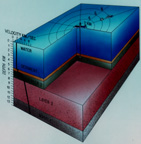
Figure 1: In an Oblique Seismic Experiment
the drill ship maintains its position over the borehole and monitors the downhole
geophone while a shooting ship sails concentric circles and radial lines. A
generalized oceanic crustal structure and velocity-depth function are shown.
[Little and Stephen, 1985]
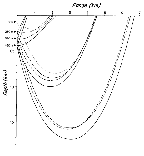
Figure 2: Rays traced through a typical
velocity model for the upper oceanic crust are shown for just below the seafloor.
The sources of the ray paths are near the sea surface in a 5.6km deep ocean
at ranges of 2, 4, 6, and 8km. [Swift et al., 1988]
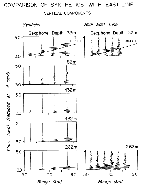
Figure 3: The evanescent behavior of the
"direct wave root" is shown here on field data (at 32 and 262m into
basement) and on synthetic seismograms. [Stephen and Bolmer, 1985]
2. Western Atlantic South of Bermuda
(DSDP Hole 418, Leg 102)
Third party borehole seismic experiments on the
Ocean Drilling Program began with an Oblique Seismic Experiment at Site 418 in
the Western Atlantic south of Bermuda on Leg 102. The experiment confirmed the
velocity structure of upper Layer 2 including azimuthal anisotropy and azimuth
dependent scattering (Figures 4 to 7).
It is interesting to note that travel-time and amplitude data from two Oblique
Seismic Experiments on 110ma crust in the slow-spreading western North Atlantic
and fast-spreading Northwestern Pacific shows that compressional velocities within
layer 2 are, within experimental error, identical [Kong et al., 1985].
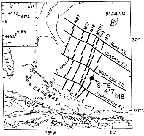
Figure 4: The first borehole seismic experiments
on ODP were carried out at Sites 417 and 418 on Leg 102. [Swift and Stephen,
1989]
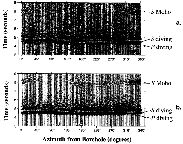
Figure 5: Raw (a) and filtered (b) data
from the vertical channel at receiver depth 230m for the 4km airgun circle shot
during ODP Leg 102. High frequency noise seen in the raw data (a) is most likely
due to pipe banging in the borehole, the drill ship maneuvering during recording
intervals, and/or debris falling down the borehole. Bandpass filtered data (b)
have been processed using a Butterworth filter at 2 and 20Hz. [Dougherty et
al., 1995]
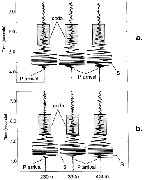
Figure 6: The coda after the principal
P and S waves is caused by scattering from roughness and heterogeneity near
the seafloor. Vertical channel data are compared for receivers at 230, 330,
and 430m below the seafloor at azimuths parallel (a) and perpendicular (b) to
the spreading direction. A summary of the azimuthal dependence of the coda amplitude
is given in Figure 7. [Dougherty et al., 1995]

Figure 7: Polar plots of coda energy for
receiver depths of 230m (a) and 430m (b). The solid line with azimuth of 295degrees
indicates the spreading direction at the site based on magnetic lineations.
In (a) the solid gray area, solid line and dashed line indicate different lengths
of the coda window used (1.0, 0.5 and 1.5 sec respectively). In (b) the solid
gray area, solid line and dashed line indicate the effects of the start time
of the coda window after the S arrival (1.1, 0.8, and 1.4 sec respectively).
[Dougherty et al., 1995]
3. Southwest Indian Ridge
(Hole 735B, Leg 118)
Normal incidence VSP's [Balch and Lee, 1984] were
carried out on ODP Legs 104, 109 and 111 [Leg 88 Shipboard Scientific Party, 1987b;
Leg 109 Shipboard Scientific Party, 1988] before the VSP at Hole 735B on Leg 118
on the Southwest IndianRidge. This experiment measured velocities corresponding
to Layer 3 which was consistent with the gabbroic petrology of the cores. Anomalously
high attenuation was also observed which prompted the hypothesis that the gabbro
cored may not actually represent the bulk of Layer 3 material (Figures
8 to 10).
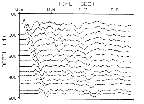
Figure 8: VSP seismograms collected at
Hole 735B using a 1000 cubic inch airgun and a vertical component geophone.
Depths in the borehole are given in meters below the seafloor; no sediments
were found at Site 735. The seismograms were filtered to pass energy less than
250Hz; signal-to-noise ratios are 5-15dB in the 5-90Hz band. The small, upward
deflection at about 25ms after the first arrival is an out-of-plane reflection
- possibly from the hull of the drilling ship. The data have been corrected
for gain changes and spherical attenuation, so the decay in amplitude with borehole
depth is due solely to attenuation. The loss of high frequency energy in the
initial 50ms over just 350m (less than a wavelength at 10Hz) can clearly be
seen. [Swift et al., 1991; Swift and Stephen, 1992]
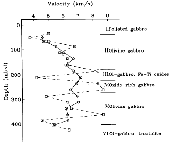
Figure 9: Interval velocities from one-way
traveltimes to VSP receiver depths [Leg 118 Shipboard Scientific Party, 1989].
The dashed line connecting the squares represents raw velocities, which are
sensitive to small subjective errors in the selection of seismic arrivals. The
solid line connecting the circles indicates velocities after smoothing by a
five-point moving average and is a more reliable indication of seismic velocity.
The numbered annotations are the lithologic units drilled. [Swift et al., 1991]
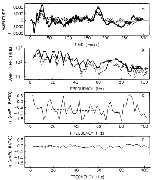
Figure 10: This is an example of the spectral
ratio method used to infer Q from the data in Figure 8. (a) Solid lines are
five traces obtained at 149mbsf; dashed lines are four traces obtained at 434m.
The travel time to the first arrival has been removed and the trace truncated
at a length of 0.3sec with a cosine taper. Note the decrease in amplitude of
the primary pulse and the bubble pulse at about 180ms. (b) Spectra of the nine
traces in (a) using the same line styles. Spectra at each depth are stacked
before computing the amplitude ratios. (c) The dashed line is the linear regression
fit to the amplitude ratios between 10 and 75Hz. Q is determined from the slope
of the amplitude ratios as a function of frequency [Hauge, 1981]. The regression
gives a Q of 46. (d) The stack of the spectral ratios obtained from 13 receiver
pairs has a linear regression fit corresponding to a Q of 26. [Swift and Stephen,
1992]
4. Argo Abyssal Plain
(Hole 765, Leg 123)
In thick sedimentary sequences VSP's can be very
useful in correlating the drilling results with the seismic reflection profiling
results. This was demonstrated on ODP Leg 123 which drilled in the Argo Abyssal
Plain (Figure 11) [Leg 123 Shipboard Scientific Party, 1990a;
Leg 123 Shipboard Scientific Party, 1990b]. VSP's were also carried out on ODP
Legs 127/128, 129, 131 and 146 [Hirata et al., 1992; Leg 123 Shipboard Scientific
Party, 1990a; Leg 123 Shipboard Scientific Party, 1990b; Leg 131 Shipboard Scientific
Party, 1991a; Leg 131 Shipboard Scientific Party, 1991b; Leg 146 Shipboard Scientific
Party, 1994a; Leg 146 Shipboard Scientific Party, 1994b; Leg 146 Shipboard Scientific
Party, 1994c; Leg 146 Shipboard Scientific Party, 1994d; Leg 148 Shipboard Scientific
Party, 1993a; Leg 148 Shipboard Scientific Party, 1993b; Moore, 1993; Shinohara
et al., 1992].
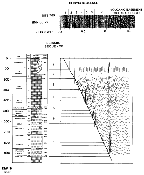
Figure 11: The Leg 123 VSP data was processed
by separating the total field into separate upgoing and downgoing wavefields.
This figure shows the upgoing wavefield for an airgun source. The processing
revealed additional reflections in the sedimentary section between 8.25 and
8.55 sec and a sub-basement reflector at 8.86sec. The traces between 90 and
150mbsf are a stack of the deconvolved VSP data (traveltimes are for two-way
propagation.) The VSP section can be used to correlate the BMR seismic reflection
line (top) with the drilling results (left side). The seismic sequences are
numbered. [Bolmer et al., 1992]
5. Costa Rica Rift
(Hole 504B, Legs 111 and 148)
The VSP data acquired at Hole 504B in the eastern
equatorial Pacific on Leg 148 helped to constrain the velocity-depth structure
at the site [Leg 109 Shipboard Scientific Party, 1988; Leg 148 Shipboard Scientific
Party, 1993a; Leg 148 Shipboard Scientific Party, 1993b; Swift et al., 1996; Swift
et al., 1998a; Swift et al., 1998b] and showed that upper Layer 3 at this site,
at a depth of over 2km into the crust, did not consist of gabbros but rather consisted
of the lower portions of the sheeted dykes (Figure 12) [Detrick
et al., 1993]. VSP's were also carried out on Leg 156 [Leg 156 Shipboard Scientific
Party, 1995a; Leg 156 Shipboard Scientific Party, 1995b; Leg 156 Shipboard Scientific
Party, 1995c].

Figure 12: The variation in bulk resistivity
downhole derived from logging in Hole 504B, the crustal velocity structure at
the site, and the lithostratigraphy. The crustal velocity model is based on
a Layer 3 velocity of 6.5km/sac derived from sonobuoy studies around Hole 504B
(vertical bar) and a linear regression of the shallow crustal velocity gradient
determined from travel-time and amplitude modeling of the borehole seismic experiment
(thick solid line). For comparison, the thin grey line shows the sonic velocity
log and the dashed line shows the sonobuoy velocity model. The change in the
vertical velocity gradient that defines the seismic layer 2/3 boundary at 1.2+/-0.2km
sub-basement, occurs within the sheeted-dyke section, about 660m above the base
of the hole. At least the upper 400-800m of seismic layer 3 consists of dolerites
and metadolerites rather than gabbro. [Detrick et al., 1993]
6. Gas Hydrates on the Blake Ridge
(Holes 994, 995 and 997, Leg 164)
Both offset and normal incidence VSP_s were run
on Leg 164 to study the seismic velocity structure of gas hydrates on the Blake
Ridge, offshore South Carolina (Figure 13 and 14).
Seismic velocities measured in three drill holes through the gas hydrate deposit
indicate that substantial free gas exists to at least 250meters beneath the bottom-simulating
reflector (BSR) (Figure 15). Both methane hydrate and free
gas exist even where a clear BSR is absent. The low reflectance, or blanking,
above the BSR is caused by lithologic homogeneity of the sediments rather than
by hydrate cementation. [Holbrook et al., 1996; Leg 164 Shipboard Scientific Party,
1996a; Leg 164 Shipboard Scientific Party, 1996b; Leg 164 Shipboard Scientific
Party, 1996c; Leg 164 Shipboard Scientific Party, 1996d]

Figure 13: Location of ODP Leg 164 on
the Blake Ridge. [Holbrook et al., 1996]
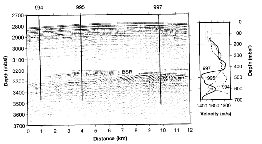
Figure 14: The positions of the three
boreholes are shown on the single channel seismic data on the Blake Ridge (left).
The depths were converted from travel-time inversion of the vertical seismic
profile data (right). Two highly reflective zones are observed: one at 0 to
150mbsf and the other at and beneath the BSR at 3220 to 3250mbsl. [Holbrook
et al., 1996]

Figure 15: The seismic velocities from
VSP's, the chlorinity, and the CaCO3 content are compared with the vertical-incidence
seismic reflection data from (A) Site 1994, (B) Site 995 and (C) Site 97. Anomalous
chlorinity values indicate that methane hydrate is present between 220 and 450mbsf
at all three sites. Seismic reflections correlate with vertical lithological
changes in the upper 150mbsf and with low seismic velocities indicative of free
gas (bright spots) beneath the hydrate stability zone. The low reflectance above
the BSR is the expected response of lithologically uniform sediments.
[Holbrook et al., 1996]
7. Seismology with the Wireline Re-entry
System
The ODP era also saw the development of systems
for re-entering boreholes from conventional research vessels (Figure
16) and submersibles after the drill ship left the site [Legrand et al., 1989;
Montagner et al., 1994a; Spiess et al., 1992]. Borehole seismic experiments and
installations that used this wireline re-entry technology were carried out in
DSDP Holes 534 (Blake-Bahama Basin) [Bradley et al., 1997; Stephen et al., 1994]
and 396 (Mid-Atlantic Ridge at 23degrees north) [Montagner et al., 1994a] and
ODP Hole 843B (south of Oahu [Collins et al., 2001; Dziewonski et al., 1992; Stephen
et al., 2003; Sutherland et al., submitted]. The latter experiment (the Ocean
Seismic Network Pilot Experiment) carried out a test of three configurations of
broadband seafloor seismic installation in preparation for extending the Global
Seismic Network to the deep ocean.
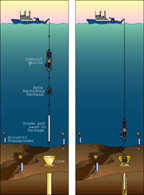
Figure 16: In the Wireline Re-entry System
a borehole sonde, data recording package and control vehicle are suspended from
a conventional research vessel on co-axial or fibre-optic cable (left). The
control vehicle, navigated within a network of acoustic transponders, is used
to guide the sonde into the borehole. The sonde is lowered into the borehole
until the data recording package lands in the re-entry cone (right). When the
seafloor and subseafloor systems are operating properly the control vehicle
is disconnected from the data recoding package and is recovered back onboard
the ship. The borehole system acquires data autonomously for up to a year until
the system is recovered by grappling. [Spiess et al., 1992]
8. Broadband Borehole Seismology
A new innovation on ODP was the deployment of broadband
seismometers in boreholes. Whereas the conventional VSP_s and offset VSP_s mentioned
above operate in the frequency range from 1 to 100Hz (similar to the band used
for reflection and refraction seismology), broadband seismometers are used in
earthquake seismology and operate in the frequency range from 0.001 to 10Hz. The
first broadband borehole seismometer test was carried out from the drill ship
on Leg 128 in the Japan Sea in the 1989 [Kanazawa et al., 1992; Suyehiro et al.,
1992]. The first submersible assisted broadband borehole seismometer test was
carried out on the Mid-Atlantic Ridge [Montagner et al., 1994a; Montagner et al.,
1994b]. On the Ocean Seismic Network Pilot Experiment a broadband borehole sensor
in ODP Hole 843B [Dziewonski et al., 1992] was compared with a shallow buried
and a seafloor seismometer for a period of over three months (Figure
17) [Collins et al., 2001; Stephen et al., 2003; Sutherland et al., submitted].
Subsequently four permanent broadband borehole seismic observatories were installed
in the Western Pacific and Japan Trench on Legs 186, 191 and 195 [Araki, 1999;
Suyehiro et al., 2002]. Three other boreholes have been drilled specifically for
borehole seismic installations: at the Ninety-east Ridge (Leg 179), near the Hawaii-2
Observatory (Leg 200), and in the equatorial Pacific (Leg 203).
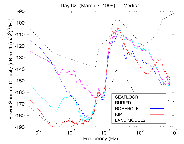
Figure 17: Vertical component spectra
for the three broadband seismometer configurations deployed on the OSNPE (seafloor,
buried and borehole) and the Kipapa GSN station on Oahu are compared with high
and low noise spectral models based on land observations. From 20mHz to 100mHz
the borehole and buried sensors in the ocean are as quiet as any land sensor.
References
Adair, R.G., M.M. Harris, J.A. Orcutt, and T.H. Jordan, Description and performance
of the marine seismic system during the Ngendie Experiment, Initial Reports of
the Deep Sea Drilling Project, 91, 335-345, 1987a.
Adair, R.G., J.A. Orcutt, and T.H. Jordan, Analysis of ambient seismic noise recorded
by downhole and ocean-bottom seismometers on Deep Sea Drilling Project Leg 78B,
Initial Reports of the Deep Sea Drilling Project, 78, 767-781, 1984.
Adair, R.G., J.A. Orcutt, and T.H. Jordan, Preliminary analysis of ocean-bottom
and sub-bottom micro-seismic noise during the Ngendie Experiment, Initial Reports
of the Deep Sea Drilling Project, 91, 357-375, 1987b.
Araki, E., Geophysical nature of broadband seismic signals in deep oceans, PhD
thesis, University of Tokyo, Tokyo, 1999.
Balch, A.H., and M.Y. Lee, Vertical Seismic Profiling: Techniques, Applications,
and Case Histories, Int. Human Resource. Develop. Corp., Boston, 1984.
Ballard, J.A., Marine seismic system (MSS) project, in Initial Reports of the
Deep Sea Drilling Project, 88, edited by F.K. Duennebier, R.A. Stephen, J.F. Gettrust,
and others, pp. 57, U.S. Government Printing Office, Washington, D.C., 1987.
Ballard, J.A., C.C. Mulcahy, R.L. Wallerstedt, and E.L. Kiser, The borehole seismic
experiment in Hole 395A: Engineering and installation, in Initial Reports of the
Deep Sea Drilling Project, 78B, edited by R.D. Hyndman, M.H. Salisbury, and others,
pp. 743-757, U.S. Government Printing Office, Washington, D.C., 1984.
Bolmer, S.T., R.T. Buffler, H. Hoskins, R.A. Stephen, and S.A. Swift, Vertical
seismic profile at site 765 and seismic reflectors in the Argo Abyssal Plain,
in Proceedings of the Ocean Drilling Project (Scientific Results), 123, edited
by F.M. Gradstein, J.N. Ludden, and others, pp. 583-600, Ocean Drilling Program,
College Station, TX, 1992.
Bradley, C.R., R.A. Stephen, L.M. Dorman, and J.A. Orcutt, Very low frequency
(0.2-10.0Hz) seismoacoustic noise below the seafloor, Journal of Geophysical Research,
102, 11,703-11,718, 1997.
Butler, R., and F.K. Duennebier, Teleseismic observations from OSS IV, in Initial
Reports of the Deep Sea Drilling Project, 88, edited by F.K. Duennebier , R.A.
Stephen, J.F. Gettrust, and others, pp. 147-153, U.S. Government Printing Office,
Washington, D.C., 1987.
Byrne, D.A., D. Harris, F.K. Duennebier, and R. Cessaro, The ocean sub-bottom
seismometer installed in the Deep Sea Drilling Project Hole 581C, Leg 88: A technical
review, in Initial Reports of the Deep Sea Drilling Project, 88, edited by F.K.
Duennebier, R.A. Stephen, J.F. Gettrust, and others, pp. 65-88, U.S. Government
Printing Office, Washington, 1987.
Carter, J.A., F.K. Duennebier, and D.M. Hussong, A comparison between a downhole
seismometer and a seismometer on the ocean floor, Bulletin of the Seismological
Society of America, 74, 763-772, 1984.
Cessaro, R.K., and F.K. Duennebier, Regional earthquakes recorded by ocean bottom
seismometers (OBS) and an ocean sub-bottom seismometer (OSS IV) on Leg 88, in
Initial Reports of the Deep Sea Drilling Project, 88, edited by F.K. Duennebier,
R.A. Stephen, J.F. Gettrust, and others, pp. 129-145, U.S. Government Printing
Office, Washington, D.C., 1987.
Christie, P.A.F., V.J. Hughes, and B.L.N. Kennett, Velocity filtering of seismic
reflection data, First Break, 1, 9-24, 1983.
Collins, J.A., F.L. Vernon, J.A. Orcutt, R.A. Stephen, K.R. Peal, F.B. Wooding,
F.N. Spiess, and J.A. Hildebrand, Broadband seismology in the oceans: lessons
from the ocean seismic network pilot experiment, Geophysical Research Letters,
28, 49-52, 2001.
Detrick, R., J. Collins, R. Stephen, and S. Swift, In situ evidence for the nature
of the seismic layer 2/3 boundary in oceanic crust, Nature, 370, 288-290, 1994.
Detrick, R.S., J. Collins, R.A. Stephen, and S. Swift, Evidence that the seismic
layer 2/3 boundary occurs above the dike/gabbro transition in hole 504B, Transactions,
American Geophysical Union, 74 (43), 645 (Abstract), 1993.
Dougherty, M.E., R.J. Vincent, S.A. Swift, and R.A. Stephen, Anisotropic seismic
scattering in old Atlantic crust, Journal of Geophysical Research, 100, 10,095-10,106,
1995.
Duennebier, F., G. Blackinton, and J. Gieskes, A man-made hot spring on the ocean
floor, in Initial Reports of the Deep Sea Drilling Project, 65, edited by B.T.R.
Lewis, P.T. Robinson, and others, pp. 357-359, U.S. Government Printing Office,
Washington, D.C., 1983.
Duennebier , F.K., The 26 May 1983 Japan earthquake recorded by OSS IV, in Initial
Reports of the Deep Sea Drilling Project, 88, edited by F.K. Duennebier, R.A.
Stephen, J.F. Gettrust, and others, pp. 155-160, U.S. Government Printing Office,
Washington, D.C., 1987.
Duennebier , F.K., and J.G. Blackinton, The ocean sub-bottom seismometer, in Handbook
of geophysical exploration at sea, edited by R.A. Geyer, pp. 317-332, CRC Press,
Boca Raton, Florida, 1983.
Duennebier, F.K., B. Lienert, R. Cessaro, P. Anderson, and S. Mallick, Controlled
source seismic experiment at Hole 581C, in Initial Reports of the Deep Sea Drilling
Project, 88, edited by F.K. Duennebier, R.A. Stephen, J.F. Gettrust, and others,
pp. 105-125, U.S. Government Printing Office, Washington, D.C., 1987a.
Duennebier, F.K., C.S. McCreery, D. Harris, R.K. Cessaro, C. Fisher, and P. Anderson,
OSS IV: Noise levels, signal-to-noise ratios, and noise sources, Initial Reports
of the Deep Sea Drilling Project, 88, 89-103, 1987b.
Dziewonski, A., R. Wilkens, J. Firth, and Shipboard Scientific Party, Background
and objectives of the ocean seismographic network, and Leg 136 drilling results,
in Proceedings of the Ocean Drilling Program, Initial Reports, 136, edited by
A. Dziewonski, R. Wilkens, and J. Firth, et al., pp. 3-8, Ocean Drilling Program,
College Station, TX, 1992.
Gal'perin, E.I., Vertical seismic profiling, Soc. Explor. Geophys., Tulsa, 1974.
Hardage, B.A., Vertical Seismic Profiling, Part A: Principles, 509 pp., Geophysical
Press, London, 1983.
Harris, M.M., J.A. Ballard, C.C. Mulcahy, A. Endress, R.L. Wallerstedt, E.L. Kiser,
and N. Gough, Marine Seismic System Experiment, in Initial Reports of the Deep
Sea Drilling Project, 91, edited by H.W. Menard, J.H. Natland, T.H. Jordan, and
J.A. Orcutt, pp. 307-333, U.S. Government Printing Office, Washington, D.C., 1987.
Hauge, P.S., Measurements of attenuation from vertical seismic profiles, Geophysics,
46, 1548-1558, 1981.
Hirata, N., H. Nambu, M. Shinohara, and K. Suyerhiro, Seismic evidence of anisotropy
in the Yamato Basin crust, Proc. O.D.P., Scientific Results, 127/128, pt. 2, 1107-1121,
1992.
Holbrook, W.S., H. Hoskins, W.T. Wood, R.A. Stephen, D. Lizarralde, and the Leg
164 Science Party, Methane hydrate and free gas on the Blake Ridge from vertical
seismic profiling, Science, 273, 1840-1843, 1996.
Hoskins, H., Effect of the ship's hull on seismic sources, in Proceedings of the
Ocean Drilling Project (Scientific Results), 148, edited by J.C. Alt, H. Kinoshita,
L.B. Stokking, P.J. Michael, and others, pp. 349-352, Ocean Drilling Program,
College Station, TX, 1996.
Hoskins, H., and W. Wood, Seismic acquisition system grounding and noise, in Proceedings
of the Ocean Drilling Project (Initial Reports), 164, edited by C.K. Paull, R.
Matsumoto, and P.J. Wallace, pp. 43-46, Ocean Drilling Program, College Station,
TX, 1996.
Jacobson, R.S., R. Adair, and J. Orcutt, Preliminary seismic refraction results
using a borehole seismometer at DSDP Site 395A, in Initial Reports of the Deep
Sea Drilling Project, 78, edited by R.D. Hyndman, M.H. Salisbury, and others,
pp. 783-792, U.S. Government Printing Office, Washington, D.C., 1984.
Jordan, T.H., H.W. Menard, J.H. Natland, and J.A. Orcutt, Introduction: Objectives
and results of DSDP Leg 91 and the Ngendie seismic experiment, and explanatory
notes for volume 91, in Initial Reports of the Deep Sea Drilling Project, 91,
edited by H.W. Menard, J.H. Natland, T.H. Jordan, J.A. Orcutt, and others, pp.
185-203, U.S. Government Printing Office, Washington, D.C., 1987.
Kanazawa, T., K. Suyehiro, N. Hirata, and M. Shinohara, Performance of the ocean
broadband downhole seismometer at site 794, in Proceedings of the Ocean Drilling
Project (Scientific Results), 127/128, edited by K. Tamaki, K. Suyehiro, J. Allan,
M. McWilliams, and others, pp. 1157-1171, Ocean Drilling Project, College Station,
TX, 1992.
Kimball, C.V., and T.L. Marzetta, Semblance processing of borehole acoustic array
data, Geophysics, 49, 274-281, 1984.
Kommedal, J.H., and B.A. Tjostheim, A study of different methods of wavefield
separation for application to VSP data, Geophysical Prospecting, 37, 117-142,
1989.
Kong, L., T.M. Brocher, and R.A. Stephen, Spreading rate independence of oceanic
seismic layer 2, Geophysical Research Letters, 12, 219-222, 1985.
Lee, M.W., and A.H. Balch, Computer processing of vertical seismic profile data,
Geophysics, 48, 272-287, 1983.
Leg 65 Shipboard Scientific Party, Site 482, in Initial Reports of the Deep Sea
Drilling Project, 65, edited by B.T.R. Lewis, P. Robinson, and others, pp. 21-136,
U.S. Government Printing Office, Washington, D.C., 1983a.
Leg 65 Shipboard Scientific Party, Site 485, in Initial Reports of the Deep Sea
Drilling Project, 65, edited by B.T.R. Lewis, P. Robinson, and others, pp. 249-306,
U.S. Government Printing Office, Washington, D.C., 1983b.
Leg 67 Shipboard Scientific Party, Site 494, in Initial Reports of the Deep Sea
Drilling Project, 67, edited by J. Aubouin, R. von Heune, and others, pp. 27-78,
U.S. Government Printing Office, Washington, D.C., 1982.
Leg 88 Shipboard Scientific Party, Introduction, in Initial Reports of the Deep
Sea Drilling Project, 88, edited by F.K. Duennebier , R.A. Stephen, J.F. Gettrust,
and others, pp. 5-8, U.S. Government Printing Office, Washington, D.C., 1987a.
Leg 88 Shipboard Scientific Party, Site 581: Downhole seismometer experiment in
the Northwest Pacific, in Initial Reports of the Deep Sea Drilling Project, 88,
edited by F.K. Duennebier , R.A. Stephen, J.F. Gettrust, and others, pp. 9-36,
U.S. Government Printing Office, Washington, D.C., 1987b.
Leg 102 Shipboard Scientific Party, Site 418; Bermuda Rise, in Proceedings of
the Ocean Drilling Project (Initial Reports), 102, edited by M.H. Salisbury, J.H.
Scott, C.A. Auroux, and others, pp. 95-235, Ocean Drilling Program, College Station,
TX, 1986.
Leg 109 Shipboard Scientific Party, Site 395, in Proceedings of the Ocean Drilling
Project (Initial Reports), 109, edited by W.B. Bryan, T. Juteau, and others, pp.
175-202, Ocean Drilling Program, College Station, TX, 1988.
Leg 118 Shipboard Scientific Party, Site 735, in Proceedings of the Ocean Drilling
Project (Initial Reports), 118, edited by P.T. Robinson, R. Von Herzen, and others,
pp. 89-222, Ocean Drilling Program, College Station, TX, 1989.
Leg 123 Shipboard Scientific Party, Explanatory Notes, in Proceedings of the Ocean
Drilling Project (Initial Reports), 123, edited by J.N. Ludden, F.M. Gradstein,
and others, pp. 27-59, Ocean Drilling Program, College Station, TX, 1990a.
Leg 123 Shipboard Scientific Party, Site 765, in Proceedings of the Ocean Drilling
Project (Initial Reports), 123, edited by J.N. Ludden, F.M. Gradstein, and others,
pp. 63-267, Ocean Drilling Program, College Station, TX, 1990b.
Leg 131 Shipboard Scientific Party, Explanatory Notes, in Proceedings of the Ocean
Drilling Project (Initial Reports), 131, edited by A. Taira, I. Hill, J. Firth,
and others, pp. 25-60, Ocean Drilling Program, College Station, TX, 1991a.
Leg 131 Shipboard Scientific Party, Site 808, in Proceedings of the Ocean Drilling
Project (Initial Reports), 131, edited by A. Taira, I. Hill, J. Firth, and others,
pp. 71-269, Ocean Drilling Program, College Station, TX, 1991b.
Leg 146 Shipboard Scientific Party, Explanatory Notes, in Proceedings of the Ocean
Drilling Project (Initial Reports), 146, edited by G.K. Westbrook, B. Carson,
R.J. Musgrave, and others, pp. 15-48, Ocean Drilling Program, College Station,
TX, 1994a.
Leg 146 Shipboard Scientific Party, Site 891, in Proceedings of the Ocean Drilling
Project (Initial Reports), 146, edited by G.K. Westbrook, B. Carson, R.J. Musgrave,
and others, pp. 241-300, Ocean Drilling Program, College Station, TX, 1994b.
Leg 146 Shipboard Scientific Party, Site 892, in Proceedings of the Ocean Drilling
Project (Initial Reports), 146, edited by G.K. Westbrook, B. Carson, R.J. Musgrave,
and others, pp. 301-396, Ocean Drilling Program, College Station, TX, 1994c.
Leg 146 Shipboard Scientific Party, Sites 889 and 890, in Proceedings of the Ocean
Drilling Project (Initial Reports), 146, edited by G.K. Westbrook, B. Carson,
R.J. Musgrave, and others, pp. 127-239, Ocean Drilling Program, College Station,
TX, 1994d.
Leg 148 Shipboard Scientific Party, Explanatory Notes, in Proceedings of the Ocean
Drilling Project (Initial Reports), 148, edited by J.C. Alt, H. Kinoshita, L.B.
Stokking, and others, pp. 5-24, Ocean Drilling Program, College Station, TX, 1993a.
Leg 148 Shipboard Scientific Party, Site 504, in Proceedings of the Ocean Drilling
Project (Initial Reports), 148, edited by J.C. Alt, H. Kinoshita, L.B. Stokking,
and others, pp. 27-121, Ocean Drilling Program, College Station, TX, 1993b.
Leg 156 Shipboard Scientific Party, Explanatory Notes, in Proceedings of the Ocean
Drilling Project (Initial Reports), 156, edited by T.H. Shipley, Y. Ogawa, P.
Blum, and others, pp. 39-68, Ocean Drilling Program, College Station, TX, 1995a.
Leg 156 Shipboard Scientific Party, Site 948, in Proceedings of the Ocean Drilling
Project (Initial Reports), 156, edited by T.H. Shipley, Y. Ogawa, P. Blum, and
others, pp. 87-192, Ocean Drilling Program, College Station, TX, 1995b.
Leg 156 Shipboard Scientific Party, Site 949, in Proceedings of the Ocean Drilling
Project (Initial Reports), 156, edited by T.H. Shipley, Y. Ogawa, P. Blum, and
others, pp. 193-257, Ocean Drilling Program, College Station, TX, 1995c.
Leg 164 Shipboard Scientific Party, Explanatory Notes, in Proceedings of the Ocean
Drilling Project (Initial Reports), 164, edited by C.K. Paull, R. Matsumoto, P.J.
Wallace, and others, pp. 13-41, Ocean Drilling Program, College Station, TX, 1996a.
Leg 164 Shipboard Scientific Party, Site 994, in Proceedings of the Ocean Drilling
Project (Initial Reports), 164, edited by C.K. Paull, R. Matsumoto, P.J. Wallace,
and others, pp. 99-174, Ocean Drilling Program, College Station, TX, 1996b.
Leg 164 Shipboard Scientific Party, Site 995, in Proceedings of the Ocean Drilling
Project (Initial Reports), 164, edited by C.K. Paull, R. Matsumoto, P.J. Wallace,
and others, pp. 175-240, Ocean Drilling Program, College Station, TX, 1996c.
Leg 164 Shipboard Scientific Party, Site 997, in Proceedings of the Ocean Drilling
Project (Initial Reports), 164, edited by C.K. Paull, R. Matsumoto, P.J. Wallace,
and others, pp. 277-318, Ocean Drilling Program, College Station, TX, 1996d.
Legrand, J., A. Echardour, H. Floc'h, L. Floury, J. Gieskes, F. Harmegnies, G.
Loaec, J.-P. Pozzi, Y. Raer, and R. Stephen, Campagne FARE: Wireline reentry of
DSDP Hole 396B using the NADIA system, Transactions, American Geophysical Union,
70 (No. 30), 729-730 & 741, 1989.
Legs 51/52/53 Shipboard Scientific Party, Site 417, in Initial Reports of the
Deep Sea Drilling Project, 51,52,53, edited by T. Donnelly, J. Francheteau, W.
Bryan, P. Robinson, M. Flower, and M.H. Salisbury, pp. 23-350, U.S. Government
Printing Office, Washington, D.C., 1980.
Little, S.A., and R.A. Stephen, Costa Rica Rift borehole seismic experiment, Deep
Sea Drilling Project Hole 504B, Leg 92, Initial Reports of the Deep Sea Drilling
Project, 83, 517-528, 1985.
Mons, R., and K. Barbour, Vertical seismic profiling, Schlumberger, 1981.
Montagner, J.P., J.-F. Karczewski, B. Romanowicz, S. Bouaricha, P. Lognonne, G.
Roult, E. Stutzmann, J.-L. Thirot, J. Brion, B. Dole, D. Fouassier, J.-C. Koenig,
J. Savary, L. Floury, J. Dupond, A. Echardour, and H. Floc'h, The French Pilot
Experiment OFM-SISMOBS: first scientific results on noise level and event detection,
Physics of the Earth and Planetary Interiors, 84, 321-336, 1994a.
Montagner, J.P., B. Romanowicz, and J.F. Karczewski, A first step toward an oceanic
geophysical observatory, Transactions, American Geophysical Union, 75 (No. 13
(March 29)), 150-151 & 154, 1994b.
Moore, G.F., Data report: Vertical seismic profile data, Hole 808E, Nankai Trough,
in Proceedings of the Ocean Drilling Project (Scientific Results), 131, edited
by I.A. Hill, A. Taira, J.V. Firth, and others, pp. 417-422, Ocean Drilling Program,
College Station, TX, 1993.
Moore, G.F., J. Dellinger, M.E. MacKay, and H. Hoskins, Seismic velocities at
Site 891 from a vertical seismic profile experiment, in Proceedings of the Ocean
Drilling Project (Scientific Results), 146 Part 1, edited by B. Carson, G.K. Westbrook,
R.J. Musgrave, E. Suess, and others, pp. 337-348, Ocean Drilling Program, College
Station, TX, 1995.
Ross, W.S., and P.M. Shaw, Vertical seismic profiling reflectivity: ups over downs,
Geophysics, 52, 1149-1154, 1987.
Rutledge, J.T., and H. Winkler, Attenuation measurements from vertical seismic
profile data: Leg 104, Site 642, in Proceedings of the Ocean Drilling Project
(Scientific Results), 104, edited by O. Eldholm, J. Thiede, E. Taylor, and others,
pp. 965-972, Ocean Drillinmg Program, College Station, TX, 1989.
Salisbury, M.H., J.H. Scott, C. Auroux, K. Becker, W. Bosum, C. Broglia, R.L.
Carlson, N.I. Christensen, A.T. Fisher, J.M. Gieskes, M. Holmes, H. Hoskins, D.
Moos, R.A. Stephen, and R. Wilkens, Old oceanic crust: Synthesis of logging, laboratory,
and seismic data from Leg 102, in Proceedings of the Ocean Drilling Project (Scientific
Results), 102, edited by M.H. Salisbury, J.H. Scott, and others, pp. 155-180,
Ocean Drilling Project, College Station, 1988.
Salisbury, M.H., R.A. Stephen, N.I. Christensen, J. Francheteau, Y. Hamano, M.
Hobart, and D. Johnson, The physical state of the upper levels of Cretaceous oceanic
crust from the results of logging, laboratory studies, and the oblique seismic
experiment at Deep Sea Drilling Project Sites 417 and 418, in Initial Reports
of the Deep Sea Drilling Project, 51,52,53, edited by T. Donnelly, J. Francheteau,
W. Bryan, P. Robinson, M. Flower, and M. Salisbury, pp. 1579-1597, U.S. Government
Printing Office, Washington, D.C., 1979.
Shearer, P., and J. Orcutt, Anisotropy in the oceanic lithosphere: Theory and
observations from the Ngendie seismic refraction experiment in the south-west
Pacific, Geophysical Journal of the Royal Astronomical Society, 80, 493-526, 1985.
Shearer, P.M., R.G. Adair, J.A. Orcutt, and T.H. Jordan, Simultaneous borehole
and ocean bottom seismometer recordings of earthquakes and explosions: Results
from the 1983 Ngendie experiment at Deep Sea Drilling Hole 595B, in Initial Reports
of the Deep Sea Drilling Project, 91, edited by H.W. Menard, J.H. Natland, T.H.
Jordan, J.A. Orcutt, and others, pp. 377-384, U.S. Government Printing Office,
Washington, D.C., 1987a.
Shearer, P.M., J.A. Orcutt, T.H. Jordan, R.B. Whitmarsh, I.I. Kim, R.G. Adair,
and M.S. Burnett, The Ngendie seismic refraction experiment at Deep Sea Drilling
Project Hole 595B - ocean bottom seismometer data and evidence for crustal and
upper mantle anisotropy, in Initial Reports of the Deep Sea Drilling Project,
91, edited by H.W. Menard, J.H. Natland, T.H. Jordan, J.A. Orcutt, and others,
pp. 385-435, U.S. Government Printing Office, Washington, D.C., 1987b.
Shinohara, M., N. Harata, H. Nambu, K. Suyehiro, T. Kanazawa, and H. Kinoshita,
Detailed crustal structure of northern Yamato Basin, Proc. O.D.P., Scientific
Results, 127/128, pt. 2, 1075-1105, 1992.
Spiess, F.N., D.E. Boegeman, and C. Lowenstein, First ocean-research-ship-supported
fly-in re-entry to a deep ocean drill hole, Marine Technical Society Journal,
26 (3), 3-10, 1992.
Stephen, R.A., The oblique seismic experiment in oceanic crust - equipment and
technique, Marine Geophysical Researches, 4, 213-226, 1979.
Stephen, R.A., Seismic anisotropy observed in upper oceanic crust, Geophysical
Research Letters, 8, 865-868, 1981.
Stephen, R.A., The oblique seismic experiment on Deep Sea Drilling Project Leg
70, in Initial Reports of the Deep Sea Drilling Project, 69, edited by J.R. Cann,
M.G. Langseth, J. Honnorez, R.P. Von Herzen, S.M. White, and others, pp. 301-308,
U.S. Government Printing Office, Washington, 1983.
Stephen, R.A., Seismic anisotropy in the upper oceanic crust, Journal of Geophysical
Research, 90, 11,383-11,396, 1985.
Stephen, R.A., Lateral heterogeneity in the upper oceanic crust at DSDP Site 504,
Journal of Geophysical Research, 93 (B6), 6571-6584, 1988.
Stephen, R.A., and S.T. Bolmer, The direct wave root in marine seismology, Bulletin
of the Seismological Society of America, 75 (No. 1), 57-67, 1985.
Stephen, R.A., and A.J. Harding, Travel time analysis of borehole seismic data,
Journal of Geophysical Research, 88 (B10), 8289-8298, 1983.
Stephen, R.A., S. Johnson, and B. Lewis, The oblique seismic experiment on Deep
Sea Drilling Project Leg 65, in Initial Reports of the Deep Sea Drilling Project,
65, edited by B.T.R. Lewis, P. Robinson, and others, pp. 319-326, U.S. Government
Printing Office, Washington, 1983.
Stephen, R.A., D. Koelsch, H. Berteaux, A. Bocconcelli, S. Bolmer, J. Cretin,
N. Etourmy, A. Fabre, R. Goldsborough, M. Gould, S. Kery, J. Laurent, G. Omnes,
K. Peal, S. Swift, R. Turpening, and C. Zani, The seafloor borehole array seismic
system (SEABASS) and VLF ambient noise, Marine Geophysical Researches, 16, 243-286,
1994.
Stephen, R.A., K.E. Louden, and D.H. Matthews, The oblique seismic experiment
on Deep Sea Drilling Project leg 52, in Initial Reports of the Deep Sea Drilling
Project, 51-53, edited by T. Donnelly, J. Francheteau, W. Bryan, P. Robinson,
M. Flower, and M. Salisbury, pp. 675-704, U.S. Government Printing Office, Washington,
1979.
Stephen, R.A., K.E. Louden, and D.H. Matthews, The oblique seismic experiment
on DSDP Leg 52, Geophysical Journal of the Royal Astronomical Society, 60, 289-300,
1980.
Stephen, R.A., F.N. Spiess, J.A. Collins, J.A. Hildebrand, J.A. Orcutt, K.R. Peal,
F.L. Vernon, and F.B. Wooding, Ocean seismic network pilot experiment, Geochemistry,
Geophysics, Geosystems, 4 (10), 1092, doi: 10.1029/2002GC000485, 2003.
Sutherland, F.H., F.L. Vernon, J.A. Orcutt, J.A. Collins, and R.A. Stephen, Results
from OSNPE: Low threshold magnitudes for ocean-bottom recording, Bulletin of the
Seismological Society of America, submitted.
Suyehiro, K., E. Araki, M. Shinohara, and T. Kanazawa, Deep sea borehole observatories
ready and capturing seismic waves in the Western Pacific, Eos, Transactions, AGU
(Supplement), 83, 621, 624-625, 2002.
Suyehiro, K., T. Kanazawa, N. Hirata, M. Shinohara, and H. Kinoshita, Broadband
downhole digital seismometer experiment at Site 794: A technical paper, in Proceedings
of the Ocean Drilling Project (Scientific Results), 127/128, edited by K. Tamaki,
K. Suyehiro, J. Allan, M. McWilliams, and others, pp. 1061-1073, Ocean Drilling
Program, College Station, TX, 1992.
Swift, S.A., H. Hoskins, and R.A. Stephen, Seismic stratigraphy in a transverse
ridge, Atlantis II fracture zone, in Proceedings of the Ocean Drilling Project
(Scientific Results), 118, edited by R.P. Von Herzen, and P.T. Robinson, pp. 219-226,
Ocean Drilling Program, College Station, TX, 1991.
Swift, S.A., H. Hoskins, and R.A. Stephen, Vertical seismic profile into upper
oceanic crust at Hole 504B, in Proceedings of the Ocean Drilling Project (Scientific
Results), 148, edited by J.C. Alt, H. Kinoshita, L.B. Stokking, P.J. Michael,
and others, pp. 339-347, U.S. Government Printing Office, Washington, 1996.
Swift, S.A., G.M. Kent, R.S. Detrick, J.A. Collins, and R.A. Stephen, Oceanic
basement structure, sediment thickness, and heat flow near Hole 504B, Journal
of Geophysical Research, 103, 15,377-15,391, 1998a.
Swift, S.A., D. Lizarralde, H. Hoskins, and R.A. Stephen, Seismic attenuation
in upper oceanic crust at Hole 504B, Journal of Geophysical Research, 103, 27,193-27,206,
1998b.
Swift, S.A., and R.A. Stephen, Lateral heterogeneity in the seismic structure
of upper oceanic crust, Western North Atlantic, Journal of Geophysical Research,
94, 9303-9322, 1989.
Swift, S.A., and R.A. Stephen, How much gabbro is in ocean seismic layer 3?, Geophysical
Research Letters, 19, 1871-1874, 1992.
Swift, S.A., R.A. Stephen, and H. Hoskins, Structure of upper oceanic crust from
an Oblique Seismic Experiment at site 418A, Western North Atlantic, in Proceedings
of the Ocean Drilling Project (Scientific Results), 102, edited by M.H. Salisbury,
J.H. Scott, and others, pp. 97-113, U.S. Government Printing Office, Washington,
1988.
Whitmarsh, R.B., J.A. Orcutt, T.H. Jordan, R.G. Adair, and P.M. Shearer, Velocity
bounds on the seismic structure of Mesozoic crust and upper mantle in the southwest
Pacific basin from downhole observations at Deep Sea Drilling Project Hole 595B,
in Initial Reports of the Deep Sea Drilling Project, 91, edited by H.W. Menard,
J.H. Natland, T.H. Jordan, J. Orcutt, and others, pp. 437-444, U.S. Government
Printing Office, Washington, D.C., 1987.
Extra reference list
[Adair et al., 1987a; Adair et al., 1984; Adair et al., 1987b; Ballard, 1987;
Ballard et al., 1984; Butler and Duennebier, 1987; Byrne et al., 1987; Carter
et al., 1984; Cessaro and Duennebier, 1987; Christie et al., 1983; Detrick et
al., 1994; Duennebier et al., 1983; Duennebier 1987; Duennebier and Blackinton,
1983; Duennebier et al., 1987a; Duennebier et al., 1987b; Gal'perin, 1974; Hardage,
1983; Harris et al., 1987; Hoskins, 1996; Hoskins and Wood, 1996; Jacobson et
al., 1984; Jordan et al., 1987; Kanazawa et al., 1992; Kimball and Marzetta,
1984; Kommedal and Tjostheim, 1989; Lee and Balch, 1983; Leg 65 Shipboard Scientific
Party, 1983a; Leg 65 Shipboard Scientific Party, 1983b; Leg 67 Shipboard Scientific
Party, 1982; Leg 88 Shipboard Scientific Party, 1987a; Leg 88 Shipboard Scientific
Party, 1987b; Leg 102 Shipboard Scientific Party, 1986; Legs 51/52/53 Shipboard
Scientific Party, 1980; Mons and Barbour, 1981; Moore et al., 1995; Ross and
Shaw, 1987; Rutledge and Winkler, 1989; Salisbury et al., 1988; Salisbury et
al., 1979; Shearer et al., 1987a; Shearer et al., 1987b; Stephen, 1983; Stephen
et al., 1983; Suyehiro et al., 1992; Whitmarsh et al., 1987]
 Return to the Marine
Seismology and Geoacoustics Page
Return to the Marine
Seismology and Geoacoustics Page
created on December 10, 2003 by Tom Bolmer
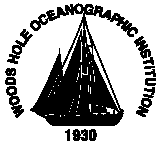
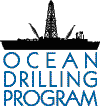


 Return to the Marine
Seismology and Geoacoustics Page
Return to the Marine
Seismology and Geoacoustics Page